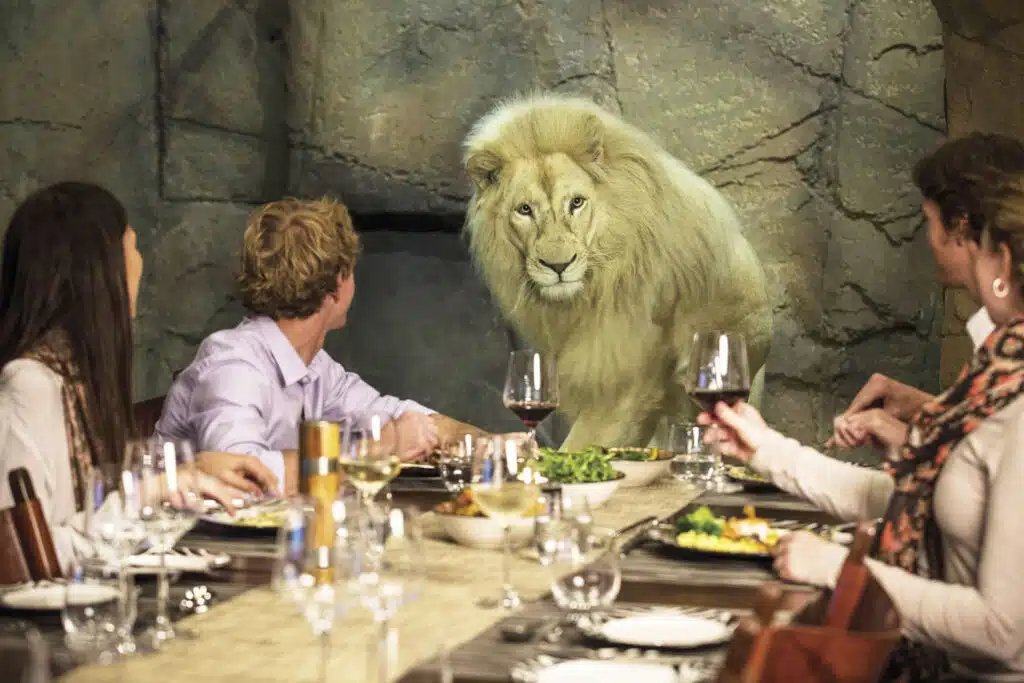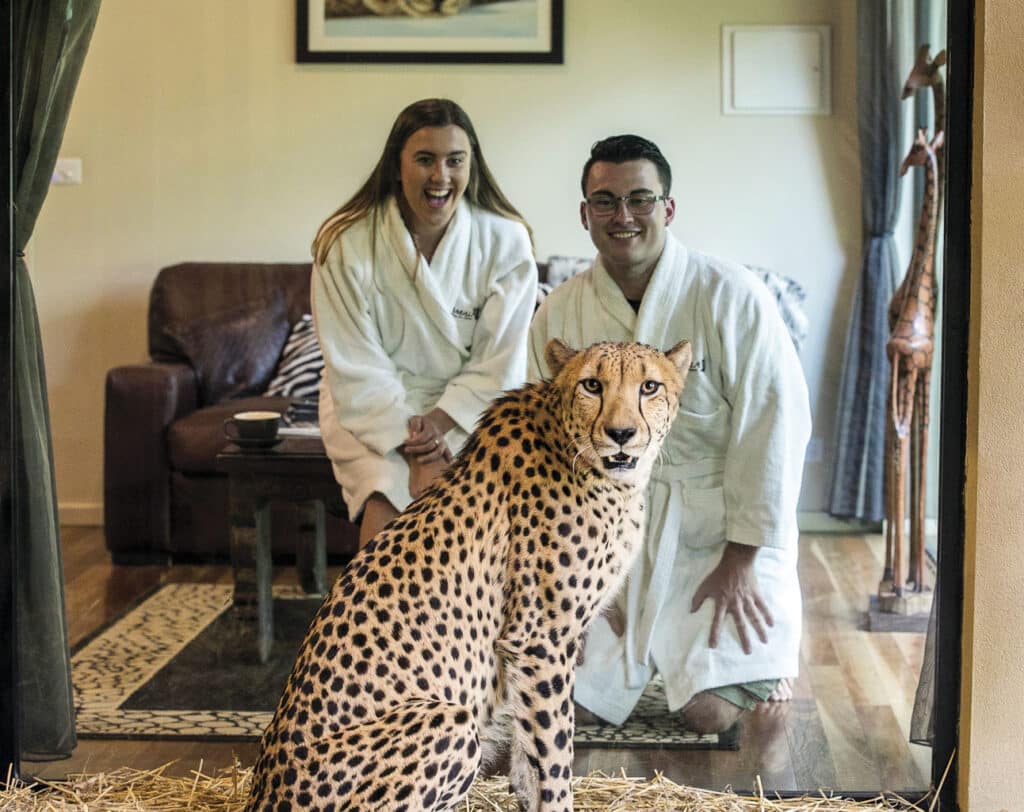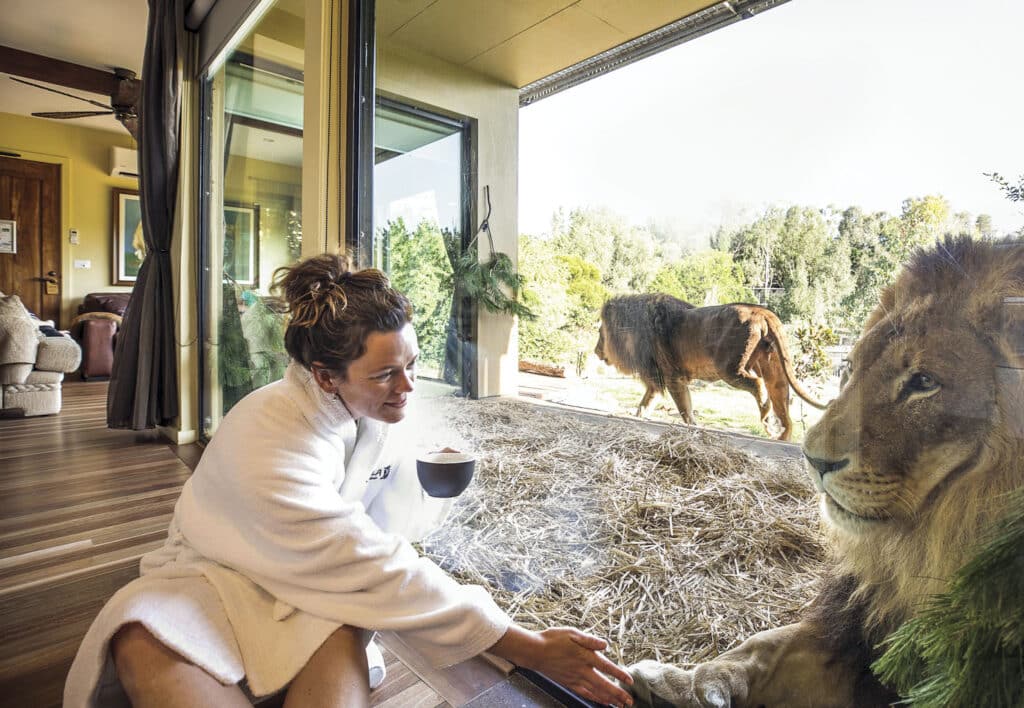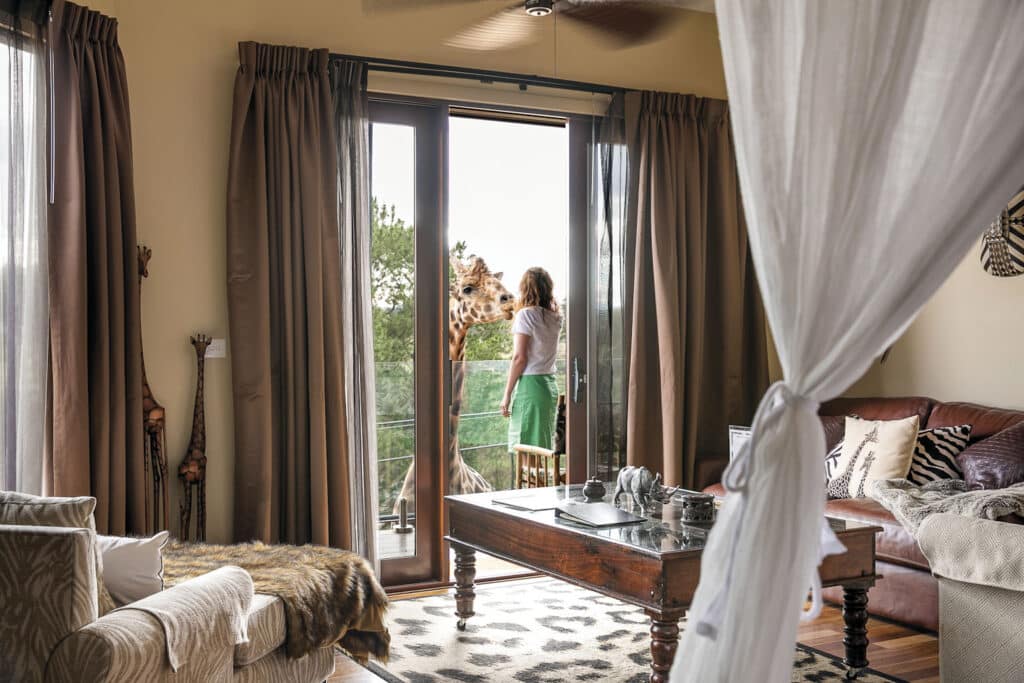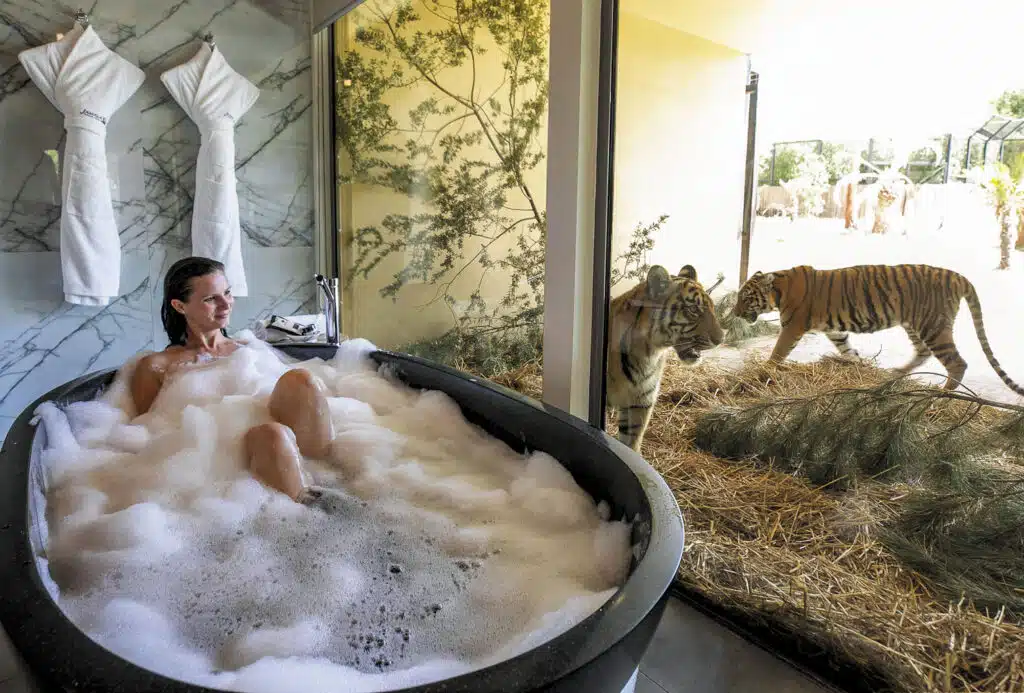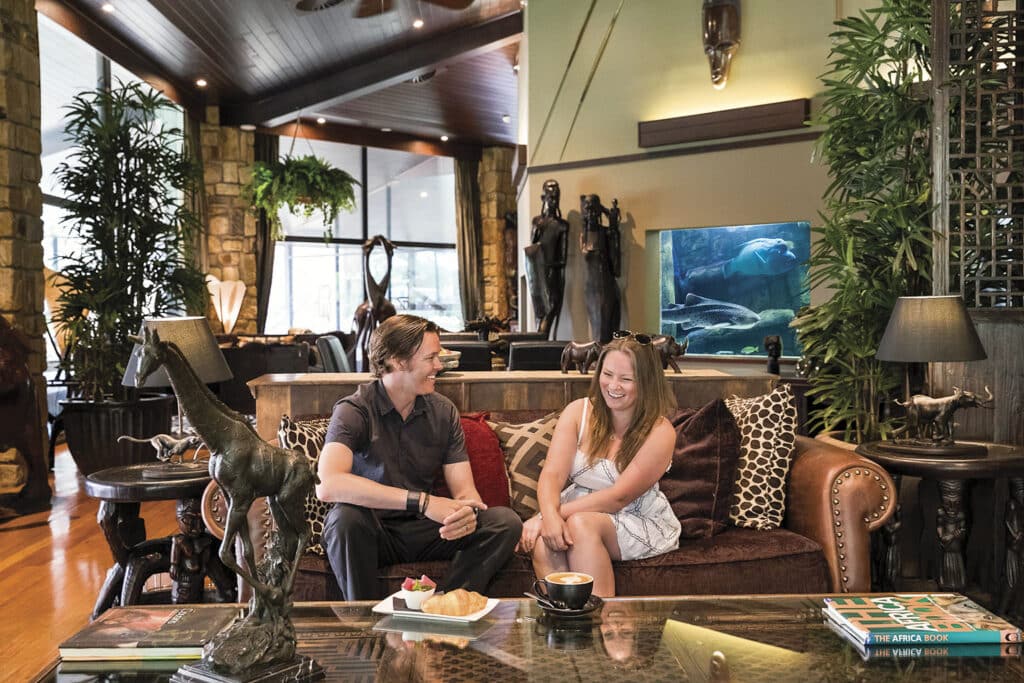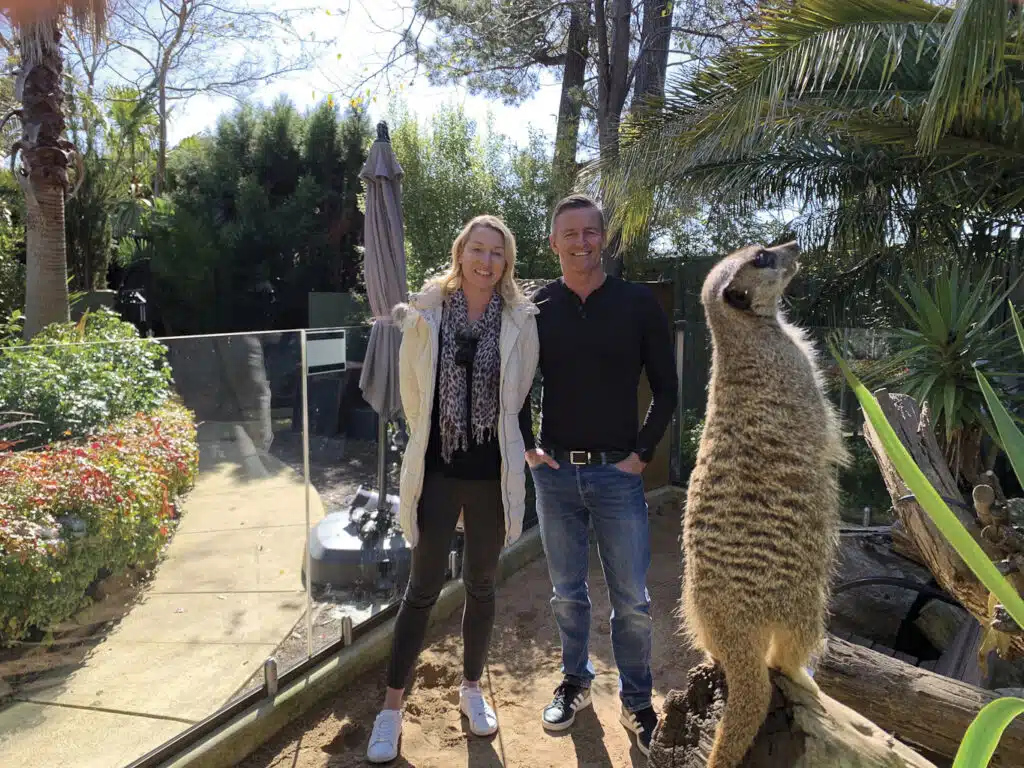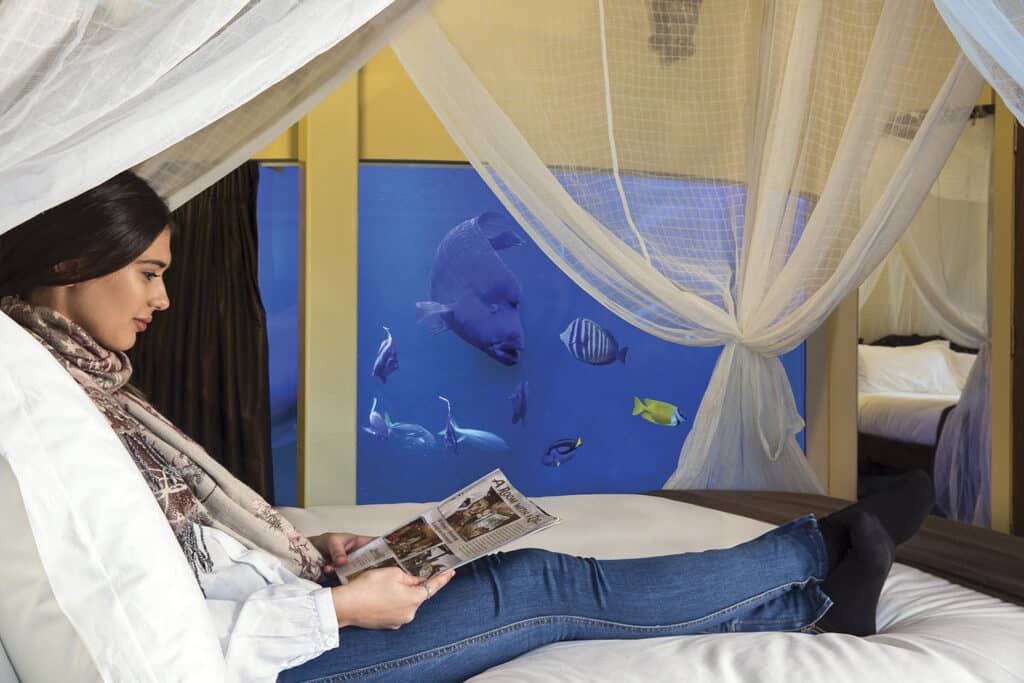TRAVEL
A wild legacy
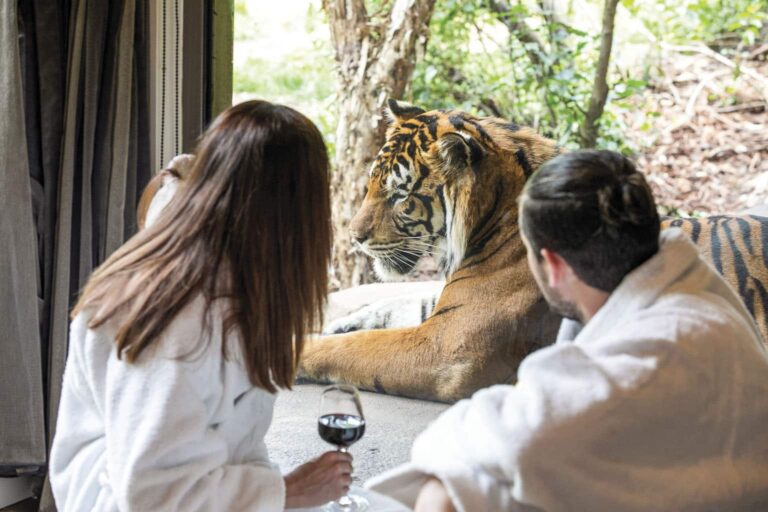
WORDS: Steve Hunt PHOTOGRAPHY Supplied
From real estate mogul to zoo owner – Jamala Wildlife Lodge and National Zoo and Aquarium founder Richard Tindale has crafted a truly unique, luxurious African-style escape for animal lovers in the heart of the nation’s capital.
In the late 1990s, Richard Tindale had an epiphany. As a real estate and development mogul in Canberra, he had carved out a strong reputation as a businessman. But something wasn’t satisfying him.
For most of his life, Richard had loved big cats and spent 23 consecutive years travelling to exotic locations in Africa, South America, India and Siberia looking for lions and tigers.
“I just loved them and it broke my heart to see their numbers diminishing around the world,” he says.
So in 1998, Richard was shown a large tract of land in Canberra’s outskirts where he visualised a dream that has now become a reality – Jamala Wildlife Lodge and the National Zoo and Aquarium.
“A friend of mine in the real estate industry just called me up and said, ‘I need you to take a look at this piece of land’,” Richard says. “So I came out and I thought ‘this would be perfect for the breeding facility for big cats’. The land was not expensive and it was in front of the lake and perfect for what I was looking to do.
“The problem was the land had an approval for a 100-room hotel and 30 serviced apartments, so because of my real estate and development background, no one believed I really wanted to create a zoo and a breeding facility. They expected to see the land commercialised with hotels and apartments instead of a zoo.
“So when I started the zoo, I had two emus breeding for the first two years before anyone would even consider giving me a permit to breed cats and introduce other animals to the facility. Originally, no one would give us any animals because it’s a very closed shop within the zoo industry and they’re very protective. And it’s a good thing. Because you know, they don’t want to see people come in and commercialise it. And that was never our intention.”
In fact, the only income-generating aspect of the national zoo which pays for the upkeep of the large variety of exotic animals is the Jamala Lodge, an exquisite experience where guests pay to stay in a luxury lodge with a tiger, a lion, a meerkat or giraffe wandering around with only glass between you.
“That’s why we set up the Jamala Lodge,” Richard says. “It was never to make money, but we needed funding in addition to the capital that I had injected into the zoo so that we could achieve our goals, expand the zoo with new animals and develop our education and breeding programs.”
The exotic packages on offer at Jamala include the Luxury Jamala and Hyatt Package, the Shark Grand Suite Special and the Seclusion Package. With each of these, guests get the best of both worlds – feeling the thrill of encounters with wild animals and relaxing in the unique atmosphere of five-star accommodation.
There is no denying Jamala offers an experience like no other, with a carefully crafted combination of luxury and adventure. Its enclosures are far larger than most other urban zoos, fulfilling their objective of comfortably housing animals that have spent their life in circuses or other inadequate spaces by giving them the leisurely retirement home they deserve.
The zoo has grown in size and reputation, becoming a leading Australian contributor to breeding programs and an educator to younger generations. Jamala Wildlife Lodge now has what is widely regarded as some of the best animal interactions our world has to offer.
Richard says Jamala has enjoyed an upsurge since the re-opening of the borders – an “acceleration of people wanting to give themselves new experiences”.
“We have certainly had guests that either cannot or have not been able to travel to, say Africa, and yet can gain an understanding and experience of the world’s exotic animals through us,” he says.
All breeding and educational programs are supported by funds raised by Jamala Wildlife Lodge. The National Zoo & Aquarium contributes substantially to a large number of breeding programs that help save a number of animals from extinction.
Your writer was fortunate enough to spend the night in the Jungle Bungalow, with Ravi the Tiger as ‘host’. The room is equipped with a luxury spa bath in front of the glass enclosure where the tiger roamed freely or laid on a straw bed.
A glass wall was all that separated us. It was incredible. Whether you’re relaxing in your lounge area or taking a leisurely bath, you are always only a heartbeat away from an amazing creature.
After an enjoyable sunset, guests from each of the lodges are invited to a four-course meal where they can mingle with people from all over Australia, and the world, enjoying the experience Jamala Lodge and the National Zoo offers.
“The last few years have been particularly challenging and there are challenges ahead of us,” Richard says, with some level of concern about the prospect of foot and mouth disease entering Australia.
“Unfortunately, if foot and mouth disease entered the zoo, we would be forced to euthanise all of the hoofed animals including giraffes and zebras, so we have taken very proactive steps such as ensuring staff wear boots that never leave an animal enclosure.
“Similarly with COVID, some of the animals can catch it, so we are very cautious about ensuring staff and visitors wear masks around animals like meerkats.”
Richard says the pandemic also presented challenges.
“Our biggest was to ensure the animals would be cared for in the event that some of our key wildlife carers caught COVID,” he says. “We had two teams on site and they weren’t allowed to mingle.
“Thankfully, we use the world’s best practices and our reputation has allowed us to gain the faith of the authorities to expand our facilities over time and introduce new animals. We don’t have the resources that government-funded zoos have but that’s why Jamala Lodge is so important to us and allows us to expand bit by bit.
“It’s a labour of love. It’s just driven by a passion for animals and then obviously seeing that they need rescuing, there’s an opportunity for us to give them good lives and educate people at the same time. The aim with our breeding programs is eventually for us to have species that we can reintroduce to the wild and that’s happening already with ones that are easier to reintroduce, like some of the native animals like reptiles and amphibians.
“When you breed carnivores, it’s a lot more difficult. Working out their re-introduction to the wild is one of the biggest challenges because they’re just getting wiped out. It’s very difficult to teach them how to hunt and we can’t do this in captivity so it’s difficult. In time, I hope we’ll be able to and that’s what our breeding programs are all about.”
Richard says he is careful not to criticise countries’ different strategies when it comes to wildlife preservation.
“We have to remember that it wasn’t that long ago, maybe 100 years, that the British royal family would go to India and shoot 100 tigers,” he says.
“But we have evolved. We’re learning and we’re getting better at it and it needs to be a collective approach. There are countries that are not quite there yet and that needs to be our focus, to educate them on the importance of protecting endangered wild animals.
“We have still not done enough but through breeding programs, education and supporting conservation programs, hopefully we are heading in the right direction.”


